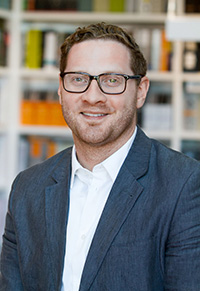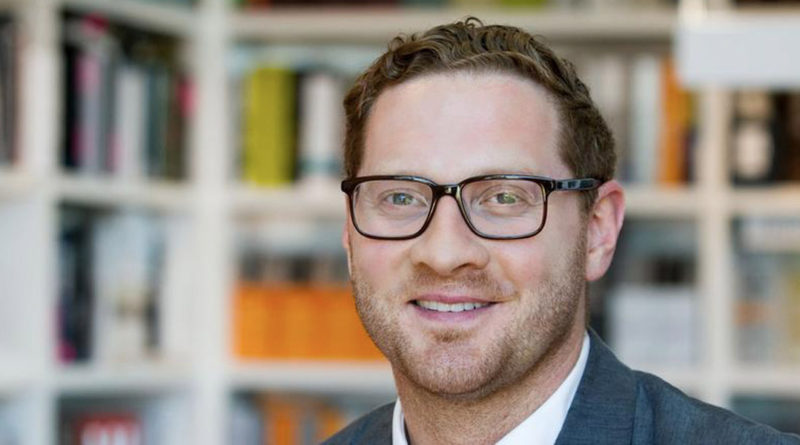Health & Wellness Tool Tracks Building Efficiency and Operations
 Data capture technology has had a major impact on many industries in the past few years, and it is starting to shift the way we design and operate buildings. These shifts have some apparent benefits for improved energy performance, occupant health and overall building operational efficiencies. However, privacy concerns loom like a shadowy Internet cloud over the terabytes of useful data that can be collected and analyzed from these buildings and their occupants. The question then becomes: How can we gather and analyze this data without compromising the privacy of those we are trying to help?
Data capture technology has had a major impact on many industries in the past few years, and it is starting to shift the way we design and operate buildings. These shifts have some apparent benefits for improved energy performance, occupant health and overall building operational efficiencies. However, privacy concerns loom like a shadowy Internet cloud over the terabytes of useful data that can be collected and analyzed from these buildings and their occupants. The question then becomes: How can we gather and analyze this data without compromising the privacy of those we are trying to help?
There has been a shift in thinking related to the design of buildings that considers lean operations and human-centric design as the predominant driving factors for a building’s elements. As buildings incorporate more efficient HVAC systems and building envelopes, lean operations, user behavior and plug loads become the driving factors for a building’s efficiency.
As we start to understand the true financial impacts of employee salaries and benefits, wellness and productivity design strategies begin to show a greater organizational payback when compared to energy and water efficiency strategies. With these shifts in mind, we have started to create predictive models of these conditions and verify our assumptions through real-time tracking of occupants in completed buildings. In other words, we’re turning our post-occupancy evaluations (POEs) into post-occupancy data capture evaluations (PODCEs).
HDR’s Computational Design group utilizes 3D modeling software to model discreet simulation events that will predict user behavior, locations and room use throughout the day. In the example illustrated below, in order to create viable operational standards for the next 20 years for this particular client, a virtual model was created to simulate operational information such as room utilization and staffing ratios. This model gives the client the ability to manipulate variables in order to improve lean operations of the facility, to see which spaces are revenue-generating and to see what the cost-per-provider would be.
This model also allows HDR teams to use the Health and Wellness Tool to estimate the health and productivity savings that the organization will realize. For example, nurse and patient exposure to useful daylight, views, activity, biophilic elements and places of respite can all be simulated throughout the day. HDR then verifies the accuracy of this predicted information by performing a PODCE, for which employees and patients are outfitted with radio frequency identification (RFID) tags. The chips utilize electromagnetic fields to identify and track objects/people for automatic data capture.
 When using a device whose predecessors were created by the Soviet Union for espionage purposes in 1945, there will undoubtedly be cause for privacy concerns. These concerns can be addressed by incorporating on-chip cryptography and over-the-air privacy that require a digital signature and a password and only operate in a fixed area. However, RFID chips have recently been hacked by criminals and individuals wishing to raise awareness about the concerns of RFID technology overreach.
When using a device whose predecessors were created by the Soviet Union for espionage purposes in 1945, there will undoubtedly be cause for privacy concerns. These concerns can be addressed by incorporating on-chip cryptography and over-the-air privacy that require a digital signature and a password and only operate in a fixed area. However, RFID chips have recently been hacked by criminals and individuals wishing to raise awareness about the concerns of RFID technology overreach.
Current uses for the RFID chip include for building inventory, retail self check-outs, supply chain management, transportation and shipping. The technology has been incorporated into door hardware, and is especially prevalent in the healthcare industry in which organizations track and manage mobile medical equipment, improve staff workflow and monitor infection control.
If you don’t think that this technology is coming to a building or a person near you, consider that the RFID market is currently valued at $8.8 billion, and is expected to rise to $18.68 billion by 2026. The FDA has already approved the use of implanted RFID chips in humans, and the chips have become so small that they are currently implanted in ants to study colony behavior.
Big benefit or Big Brother? In lieu of picking a side on this debate, let’s work to make the inevitable safe for everyone and beneficial for the future of health and the efficiency of buildings.
Colin Rohlfing, LEED AP BD+C, is the vice president, director of sustainable development for HDR’s architecture practice.

